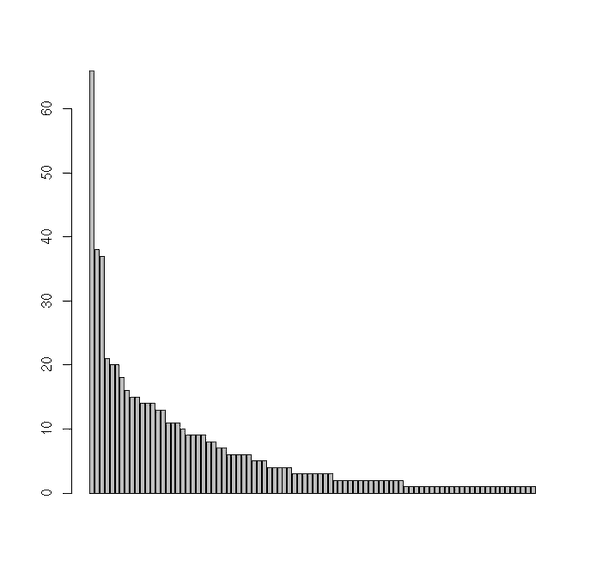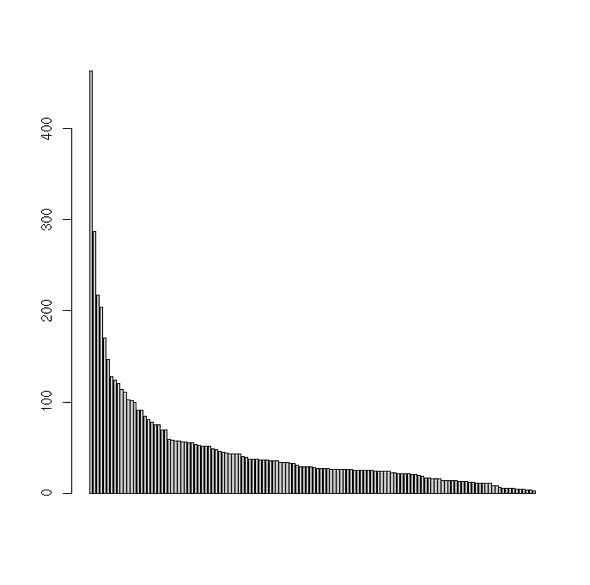Power Law Graphs from classroom community website
Posted February 15, 2008
Researchers have shown that the distribution of many natural and social phenomenons follow what’s called the power law. Power laws are known by other names such as the 20-80 rule (80% of wealth is controlled by 20% of the population), the long tail, Winner-Take-All, etc.
Here is an example power law graph from Wikipedia:
Many have written that almost all measures of web site usage follow the same pattern whether that be page views, in-bound links, etc.
This past semester I built an e-learning site for two sections of an upper-level university course at Brigham Young University. Now that the semester is finished, we’ve started to analyze the data we’ve collected on how students used the site.
And what did I notice when I started to graph the data? Why the power law of course.
So onto the graphs I made.
First is a graph of the number of comments each student made on the class website throughout the semester. This is a good measure of their engagement with the online community. You can see that some students left as many as 40-60 comments throughout the semester and others left as little as 1 or two:

Another graph which follows the power law. This time a graph of the number of visits to the class website per student. Again we see a wide disparity between students. One student visited the site over 400 times! Which in a four month semester means they visited the site on average 3 times a day! And on the other end, a number of students only visited the site 5-10 times the entire semester.
Why the Power Law?
So why does this happen? Why do some students participate on the class website so much more then other students? I’m not sure I know the answer to that. Why do some people write blogs, participate in Wikipedia, upload their photos to flickr, etc. and many others don’t?
Do some students just not see the value of blogging? Are some students more comfortable interacting online for whatever reason? Or on another tact, does it matter if some students participate more then others? After all, in any community, there’s always a core group which cares much more then others about the success of the community (read about the power law of participation). What type of participation in an online learning community meets the learning goals for a classroom?
There’s a host of other ideas rumbling around in my head about power laws, the three types of networks (political, social, creative) and how all this relates to creating effective online learning/collaborative environments. But that will all have to wait for another day. In the meantime, here’s some links.
Extra Credit Reading:
Read these two articles by Ross Mayfield, first this one, then this one.
Then two by Clay Shirky, “Power Laws, Weblogs, and Inequality” and ”Social Software and the Politics of Groups.”
And one more on building vibrant communities.
Subscribe to get updated on new posts!
Kyle Mathews lives and works in Seattle building useful things. You should follow him on Twitter. Currently exploring what's next and open to consulting.

